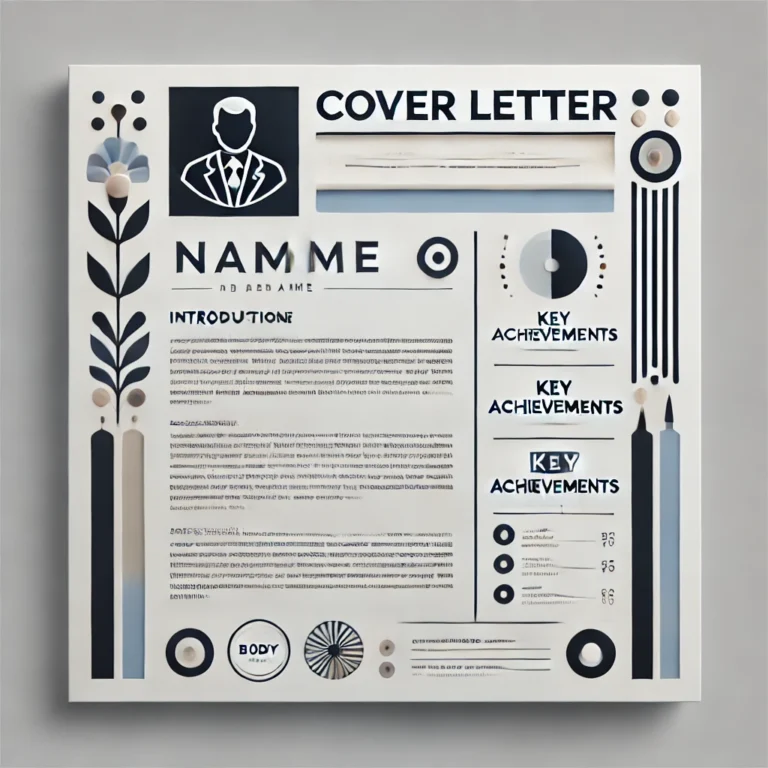A well-crafted cover letter can make all the difference when applying for your dream job. While your CV provides a detailed snapshot of your qualifications and experience, the cover letter is your chance to showcase personality, enthusiasm, and a tailored pitch to the hiring manager. The key is using a format that grabs attention while presenting your skills and value effectively.
If you’re unsure where to start, using a free cv template alongside a professional cover letter template can save time and ensure your application looks polished and consistent.
Why a Great Cover Letter Matters
According to recruitment experts, more than 80% of hiring managers consider cover letters an essential part of the application process. A great cover letter demonstrates your:
- Understanding of the company and the role.
- Ability to communicate effectively.
- Enthusiasm for the position.
In short, it can turn a good application into a standout one.
What Makes an Impressive Cover Letter Template?
A professional cover letter template ensures your document is well-structured, visually appealing, and easy to read. Here are the key components of an impressive cover letter:
1. Header with Contact Information
Your cover letter should start with your name, email, phone number, and LinkedIn profile (if relevant). Beneath that, include the employer’s name, job title, and company address.
Example:
Jane Doe
jane.doe@email.com | 07700 900123 | linkedin.com/in/janedoe
Hiring Manager
XYZ Company
123 High Street
London, UK
2. Greeting and Opening Line
Address your letter to the hiring manager by name if possible. Avoid generic greetings like “To Whom It May Concern.” For example:
- “Dear Mr. Smith”
- “Dear Hiring Team at XYZ Company”
Start with a strong opening that grabs attention, such as:
“As a long-time admirer of XYZ Company’s innovative approach to sustainability, I’m excited to apply for the Marketing Assistant position.”
3. Body Paragraphs Highlighting Your Skills
The main section of your cover letter should explain:
- Why you’re interested in the role.
- How your skills and experience align with the job requirements.
- Specific achievements or examples that demonstrate your value.
For instance:
“During my internship at ABC Agency, I managed a social media campaign that increased engagement by 40% in just two months. I believe this experience, combined with my passion for data-driven marketing, makes me an excellent fit for your team.”
4. Closing Paragraph with Call-to-Action
End with a clear, professional conclusion, such as:
“Thank you for considering my application. I’d welcome the opportunity to discuss how my skills align with the role. I look forward to hearing from you soon.”
Types of Cover Letter Templates
Different jobs call for different cover letter styles. Here are three common templates you can use as a starting point:
1. Classic Business Cover Letter
This format is ideal for formal or traditional industries like finance, law, or education. It prioritizes professionalism and follows a straightforward structure.
2. Creative Cover Letter
For roles in industries like design, marketing, or media, a creative cover letter lets you show off your personality and unique approach. You can incorporate visual elements or storytelling to stand out.
3. Career Change Cover Letter
If you’re transitioning to a new industry, this template helps you emphasize transferable skills and explain your motivation for changing career paths.
Tips for Writing a Winning Cover Letter
- Tailor Each Letter
Avoid using a generic cover letter for every application. Research the company and role to craft a personalized pitch. - Keep It Concise
A good cover letter is no more than one page long. Stick to three or four paragraphs that highlight your most relevant skills and achievements. - Use Keywords
Study the job description for keywords and phrases, and incorporate them naturally into your letter. For example, if the role emphasizes “project management,” mention specific examples where you’ve demonstrated this skill. - Focus on Achievements
Employers are more interested in what you’ve accomplished than your responsibilities. Use numbers and data to quantify your impact.
Example:
“Increased sales by 25% during Q1 by implementing a new client outreach strategy.”
- Proofread Thoroughly
Spelling or grammatical errors can make a poor impression. Use tools like Grammarly or ask a trusted friend to review your letter before submitting it.
How to Match Your Cover Letter with Your CV
Consistency between your cover letter and CV is crucial. Use the same font, formatting, and style to create a cohesive, professional look. Pairing your cover letter with a matching CV using free CV templates ensures a seamless presentation.
Conclusion
A well-designed cover letter template simplifies the process of writing an impressive application while ensuring you include all the necessary components. By tailoring your letter to each job, highlighting specific achievements, and maintaining a professional tone, you’ll significantly improve your chances of landing an interview.
Start with the right template, follow the tips outlined here, and you’ll be well on your way to crafting cover letters that leave a lasting impression on potential employers.

